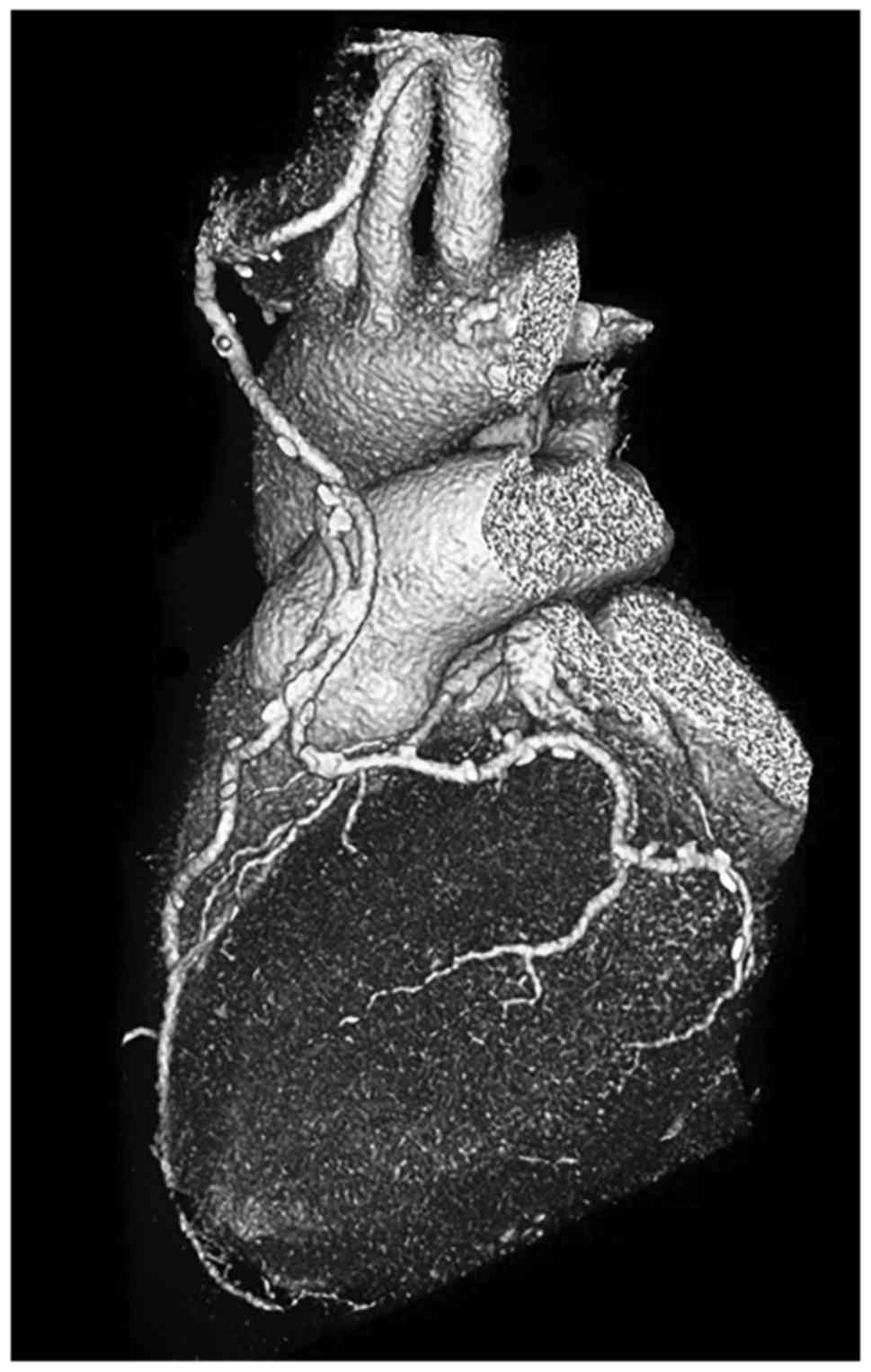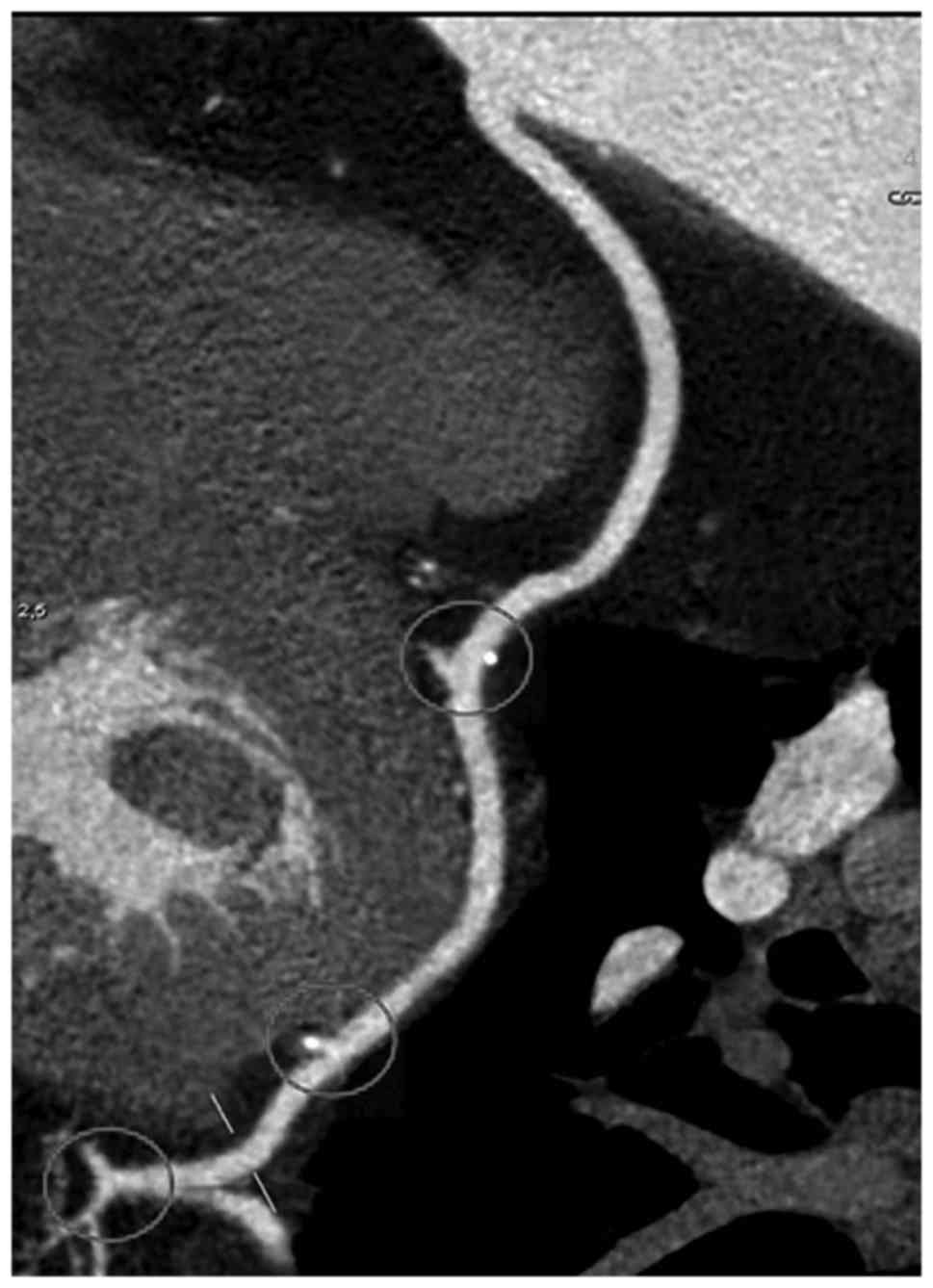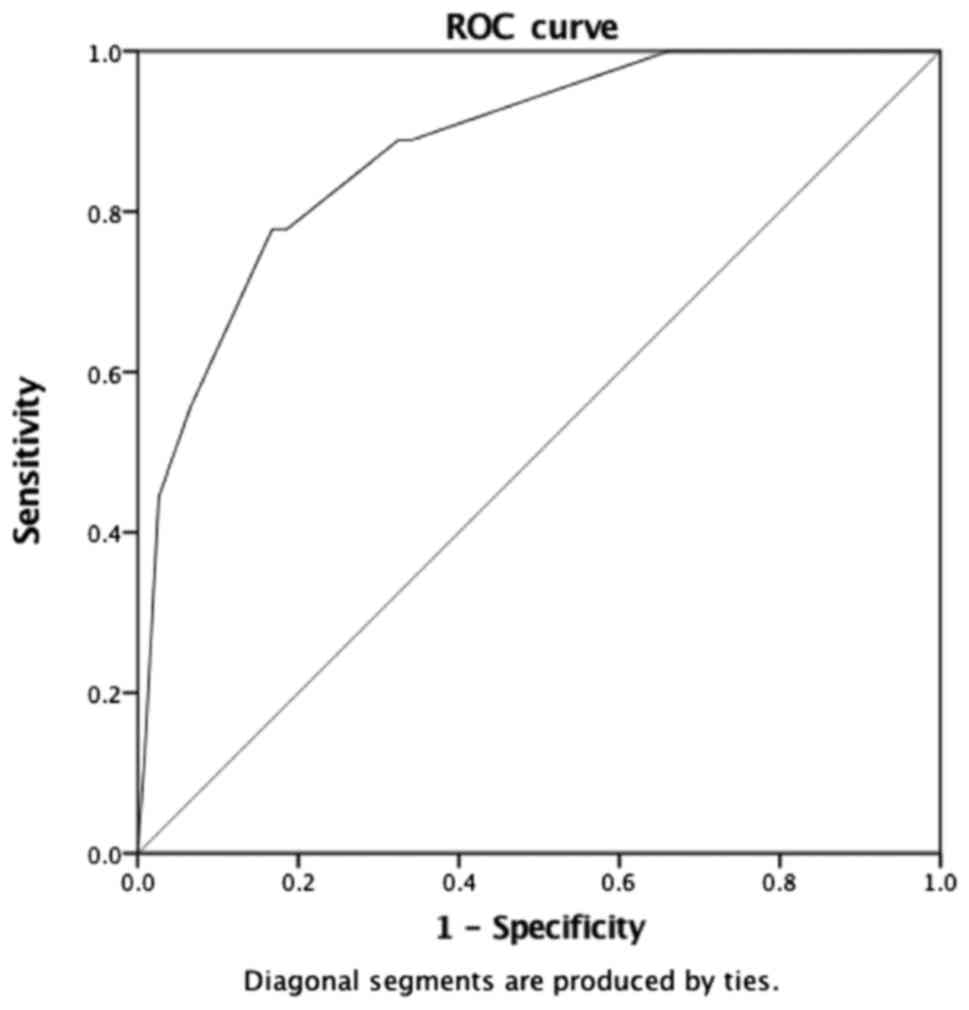|
1
|
Eurostat-Cardiovascular diseases
statistics. http://ec.europa.eu/eurostat/statistics-explained/index.php/Cardiovascular_diseases_statisticsAugust
31–2017
|
|
2
|
Eurostat-Surgical operations and
procedures statistics. http://ec.europa.eu/eurostat/statistics-explained/index.php/Surgical_operations_and_procedures_statisticsAugust
31–2017
|
|
3
|
Authors/Task Force members, . Windecker S,
Kolh P, Alfonso F, Collet JP, Cremer J, Falk V, Filippatos G, Hamm
C, Head SJ, et al: 2014 ESC/EACTS guidelines on myocardial
revascularization: The Task Force on Myocardial Revascularization
of the European Society of Cardiology (ESC) and the European
Association for Cardio-Thoracic Surgery (EACTS) Developed with the
special contribution of the European Association of Percutaneous
Cardiovascular Interventions (EAPCI). Eur Heart J. 35:2541–2619.
2014. View Article : Google Scholar : PubMed/NCBI
|
|
4
|
Coronary Revascularization Writing Group,
. Patel FR, Dehmer GJ, Hirshfeld JW, Smith PK, Spertus JA;
Technical Panel, ; Masoudi FA, Dehmer GJ, Patel MR, et al:
ACCF/SCAI/STS/AATS/AHA/ASNC/HFSA/SCCT 2012 appropriate use criteria
for coronary revascularization focused update: A report of the
American College of Cardiology Foundation Appropriate Use Criteria
Task Force, Society for Cardiovascular Angiography and
Interventions, Society of Thoracic Surgeons, American Association
for Thoracic Surgery, American Heart Association, American Society
of Nuclear Cardiology, and the Society of Cardiovascular Computed
Tomography. J Thorac Cardiovasc Surg. 143:780–803. 2012. View Article : Google Scholar : PubMed/NCBI
|
|
5
|
Sabik JF III: Understanding saphenous vein
graft patency. Circulation. 124:273–275. 2011. View Article : Google Scholar : PubMed/NCBI
|
|
6
|
Tatoulis J, Buxton BF and Fuller JA:
Patencies of 2127 arterial to coronary conduits over 15 years. Ann
Thorac Surg. 77:93–101. 2004. View Article : Google Scholar : PubMed/NCBI
|
|
7
|
Cameron AA, Green GE, Brogno DA and
Thornton J: Internal thoracic artery grafts: 20-year clinical
follow-up. J Am Coll Cardiol. 25:188–192. 1995. View Article : Google Scholar : PubMed/NCBI
|
|
8
|
Taggart DP, D'Amico R and Altman DG:
Effect of arterial revascularisation on survival: A systematic
review of studies comparing bilateral and single internal mammary
arteries. Lancet. 358:870–875. 2001. View Article : Google Scholar : PubMed/NCBI
|
|
9
|
Georghiou GP, Vidne BA and Dunning J: Does
the radial artery provide better long-term patency than the
saphenous vein? Interact Cardiovasc Thorac Surg. 4:304–310. 2005.
View Article : Google Scholar : PubMed/NCBI
|
|
10
|
Petrovic I, Nezic D, Peric M, Milojevic P,
Djokic O, Kosevic D, Tasic N, Djukanovic B and Otasevic P: Radial
artery vs saphenous vein graft used as the second conduit for
surgical myocardial revascularization: Long-term clinical
follow-up. J Cardiothorac Surg. 10:1272015. View Article : Google Scholar : PubMed/NCBI
|
|
11
|
Aydin S, Aydin S, Eren Nesimi M, Sahin I,
Yilmaz M, Kalayci M and Gungor O: The cardiovascular system and the
biochemistry of grafts used in heart surgery. Springerplus.
2:6122013. View Article : Google Scholar : PubMed/NCBI
|
|
12
|
Buxton BF and Hayward PA: The art of
arterial revascularization-total arterial revascularization in
patients with triple vessel coronary artery disease. Ann
Cardiothorac Surg. 2:543–551. 2013.PubMed/NCBI
|
|
13
|
Drouin A, Noiseux N, Chartrand-Lefebvre C,
Soulez G, Mansour S, Tremblay JA, Basile F, Prieto I and Stevens
LM: Composite versus conventional coronary artery bypass grafting
strategy for the anterolateral territory: Study protocol for a
randomized controlled trial. Trials. 14:2702013. View Article : Google Scholar : PubMed/NCBI
|
|
14
|
Ohira S, Doi K, Okawa K, Dohi M, Yamamoto
T, Kawajiri H and Yaku H: Safety and efficacy of sequential left
internal thoracic artery grafting to left circumflex area. Ann
Thorac Surg. 102:766–773. 2016. View Article : Google Scholar : PubMed/NCBI
|
|
15
|
Porto I, Gaudino M, De Maria GL, Di Vito
L, Vergallo R, Bruno P, Bonalumi G, Prati F, Bolognese L, Crea F
and Massetti M: Long-term morphofunctional remodeling of internal
thoracic artery grafts: A frequency-domain optical coherence
tomography study. Biomed Eng Online. 6:269–276. 2013.
|
|
16
|
Ghista DN and Kabinejadian F: Coronary
artery bypass grafting hemodynamics and anastomosis design: A
biomedical engineering review. Biomed Eng Online. 12:1292013.
View Article : Google Scholar : PubMed/NCBI
|
|
17
|
Li H, Xie B, Gu C, Gao M, Zhang F, Wang J,
Dai L and Yu Y: Distal end side-to-side anastomoses of sequential
vein graft to small target coronary arteries improve intraoperative
graft flow. BMC Cardiovasc Disord. 14:652014. View Article : Google Scholar : PubMed/NCBI
|
|
18
|
Dion R, Glineur D, Derouck D, Verhelst R,
Noirhomme P, El Khoury G, Degrave E and Hanet C: Long-term clinical
and angiographic follow-up of sequential internal thoracic artery
grafting. Eur J Cardiothorac Surg. 17:407–714. 2000. View Article : Google Scholar : PubMed/NCBI
|
|
19
|
Calafiore AM, Contini M, Vitolla G, Di
Mauro M, Mazzei V, Teodori G and Di Giammarco G: Bilateral internal
thoracic artery grafting: Long-term clinical and angiographic
results of in situ versus Y grafts. J Thorac Cardiovasc Surg.
120:990–996. 2000. View Article : Google Scholar : PubMed/NCBI
|
|
20
|
Tatoulis J, Buxton BF and Fuller JA:
Patencies of 2127 arterial to coronary conduits over 15 years. Ann
Thorac Surg. 77:93–101. 2004. View Article : Google Scholar : PubMed/NCBI
|
|
21
|
Fukui S, Fukuda H, Toda K, Yoshitatsu M,
Funatsu T, Masai T and Miyamoto Y: Remodeling of the radial artery
anastomosed to the internal thoracic artery as a composite straight
graft. J Thorac Cardiovasc Surg. 134:1136–1142. 2007. View Article : Google Scholar : PubMed/NCBI
|
|
22
|
Taggart DP: Current status of arterial
grafts for coronary artery bypass grafting. Ann Cardiothorac Surg.
2:427–430. 2013.PubMed/NCBI
|
|
23
|
Mukherjee D, Cheriyan J, Kourliouros A and
Athanasiou T: Does the right internal thoracic artery or saphenous
vein graft offer superior revascularization of the right coronary
artery? Interact Cardiovasc Thorac Surg. 15:244–247. 2012.
View Article : Google Scholar : PubMed/NCBI
|
|
24
|
Jung SH, Song H, Choo SJ, Je HG, Chung CH,
Kang JW and Lee JW: Comparison of radial artery patency according
to proximal anastomosis site: Direct aorta to radial artery
anastomosis is superior to radial artery composite grafting. J
Thorac Cardiovasc Surg. 138:76–83. 2009. View Article : Google Scholar : PubMed/NCBI
|
|
25
|
Song MH, Sato M and Ueda Y:
Three-dimensional simulation of coronary artery bypass grafting
with the use of computational fluid dynamics. Surg Today.
30:993–998. 2000. View Article : Google Scholar : PubMed/NCBI
|
|
26
|
Staalsen NH, Ulrich M, Winther J, Pedersen
EM, How T and Nygaard H: The anastomosis angle does change the flow
fields at vascular end-to-side anastomoses in vivo. J Vasc Surg.
21:460–471. 1995. View Article : Google Scholar : PubMed/NCBI
|
|
27
|
Frauenfelder T, Boutsianis E, Schertler T,
Husmann L, Leschka S, Poulikakos D, Marincek B and Alkadhi H: Flow
and wall shear stress in end-to-side and side-to-side anastomosis
of venous coronary artery bypass grafts. Biomed Eng Online.
6:352007. View Article : Google Scholar : PubMed/NCBI
|
|
28
|
Fei DY, Thomas JD and Rittgers SE: The
effect of angle and flow rate upon hemodynamics in distal vascular
graft anastomoses: A numerical model study. J Biomech Eng.
116:331–336. 1994. View Article : Google Scholar : PubMed/NCBI
|
|
29
|
Sherwin SJ, Doorly DJ, Franke P and Peiró
J: Unsteady near wall residence times and shear exposure in model
distal arterial bypass grafts. Biorheology. 39:365–371.
2002.PubMed/NCBI
|
|
30
|
Bonert M, Myers JG, Fremes S, Williams J
and Ethier CR: A numerical study of blood flow in coronary artery
bypass graft side-to-side anastomoses. Ann Biomed Eng. 30:599–611.
2002. View Article : Google Scholar : PubMed/NCBI
|
|
31
|
Tremblay JA, Stevens LM, Chandonnet M,
Soulez G, Basile F, Prieto I, Noiseux N and Chartrand-Lefebvre C: A
morphometric 3D model of coronary artery bypass graft dysfunction
with multidetector computed tomography. Clin Imaging. 39:1006–1011.
2015. View Article : Google Scholar : PubMed/NCBI
|


















